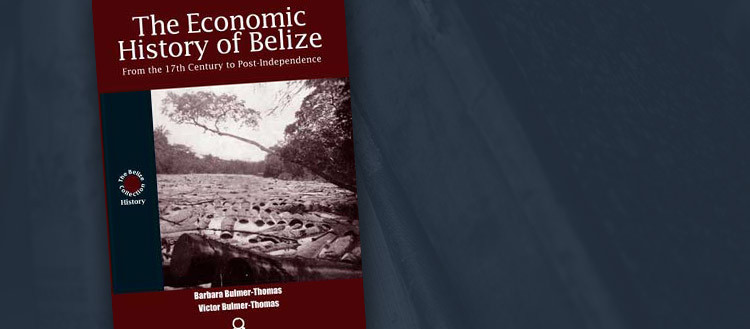Economic History of Belize: Book Review

Economic History of Belize: Book Review
Economic History of Belize: Book Review
By David Gibson
The Economic History of Belize is presented in 7 Chapters synopsized from its Preface as follows:
Chapter 1 deals with the foundations of Belize in the 17th century. It begins with the two “origin” myths that have proved so enduring in Belize regarding the mysterious figure of Peter Wallace on the one hand and the idea of settlement by shipwrecked sailors on the other. We then demonstrate that both myths are in fact fictions. The chapter also shows conclusively that there never was an historical figure called Peter Wallace.
Since the name “Belize” cannot therefore be derived from “Wallace”, the second part of the chapter explores the alternative possibilities and concludes that it is indeed derived from a Maya word. The third part of the chapter then considers the identity and location of the settlers who came before the establishment of the logwood trade.
Chapter 2 covers the century during which Belize was an illegal settlement based on the export of logwood. This period ends in 1763 with the Treaty of Paris. The four parts of the chapter deal with the foundation of the logwood settlement; its population-free and slave; the market for logwood; and the methods of production. The chapter emphasizes that Belize in this period was not subject to British Navigation Acts and was therefore able to sell its logwood all over the world. This included the newly independent United States of America.
Chapter 3 covers the century of the legal settlement from the Treaty of Paris to the establishment of the colony of British Honduras in 1862. During most of this time Belize was known as the British Settlement in the Bay of Honduras. It is during this century that the foundations of modern Belize were laid. Indeed, Belize was very prosperous for much of this period. The four parts of the chapter deal with the geopolitical rivalries between the United Kingdom and the United States that shaped British policy towards Central America in general and Belize in particular; the mahogany trade; the entrepot trade; and the social relations that emerged with the abolition of the slave trade and the emancipation of the slaves.
Chapter 4 covers the period during which Belize was a British colony, this period ending in 1981. The chapter starts with the political economy of colonialism, as Belize was now for the first time a formal part of the British Empire. It then explores the decline of the Belize economy, which roughly corresponds to the period up to 1900. The next 50 years, representing the fall of the Belize economy, are the subject of the third part. The fourth part of the chapter looks at the recovery and diversification of the economy from 1950 to independence.
Chapter 5 is a case study of the Belize Botanic Station that was established by the colonial authorities in 1892. It illustrates the dilemmas faced in seeking to diversify the Belize economy away from forestry towards agriculture as well as the tensions between different departments of the British government itself. The Botanic Station closed in the 1930s and few people today know of its history despite the fact that it occupied a prominent position on the Belize River close to the Haulover Creek.
Chapter 6 explores the Belize economy since independence. It begins with production, where Belize’s performance-as measured by the growth of Gross Domestic Product per head-has not been as fast as might have been expected following the end of colonialism. The chapter then looks at the distribution of income in Belize starting with the division between residents and non-residents and then at the distribution among residents themselves. The third part looks at the labour market since independence and the problem of creating jobs of sufficient quantity and quality. The final part looks at macroeconomic policy in Belize since independence.
Chapter 7 contains the conclusions to the book, pulling together the main threads in the economic history of Belize distinguishing between the “positives” and the “negatives”.
The key parts of the book in my view are found in the analysis of macroeconomic policy in the post independence period contained in…
Read full article here!
Book Review. Thomas, B. B., & Thomas, V. B. (2012). The economic history: From the 17th century to post independence. Belize: Cubola Productions. Review by David Gibson, 2012. Retrieved from: http://cubola.com/wp-content/uploads/2012/06/Economic-History-of-Belize.pdf
